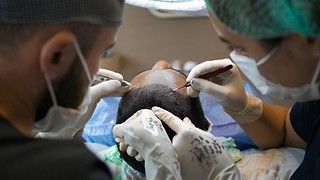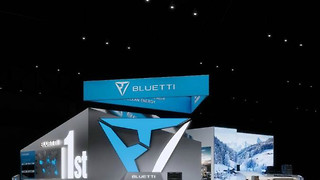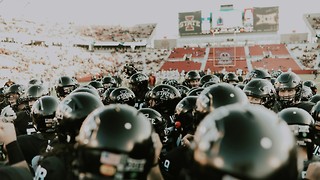Piercings: the twenty-first century pocket square?
James Swaden looks at changing attitudes towards male piercings

In 2014, the American actor Harrison Ford presented an award at the Oscars in Los Angeles. There was nothing particularly remarkable about his outfit; his hair was styled, his tuxedo black and well-fitted and his goatee trimmed. However, upon closer inspection, something was just a tiny bit different. His left earlobe was adorned with a small, hooped ring. Ford, who at the time was a sprightly 71-year-old, embodied in this unremarkable moment a significant trend in men’s jewellery: the increasing normalisation of male piercings.
Whilst male facial piercings have historically been associated with indications of sexuality and the hippie movement, since the 1980s they have grown steadily more popular. A quick look in Topman or All Saints will show the variety of earrings and other jewellery which are on trend. On campus, male students can be seen with a range of facial piercings.
Moving away from now ‘traditional’ earlobe or helix piercings, young men are increasingly making more outlandish and daring choices including: eyebrow, nose, septum, tongue, inner conch, rook, and tragus or cheek piercings. Very few people seem particularly shocked by these piercings and they have become a regular fashion item for guys seeking a bit of an edge.
Why, then, do male students choose to get facial piercings? Chesney, a 21-year-old student, believes it is part of a growing trend towards less gendered fashion choices: “I’ve always liked to be a bit different to everyone else, and my piercings are a part of that. I think there is a general trend in men’s fashion at the moment that is slowly beginning to explore domains usually reserved for female consumers- makeup, handbags, heels, skirts- as ideas surrounding traditional masculinity are challenged…I think there is still a way to go until jewellery becomes an accepted accessory (apart from, of course, daddy’s signet ring and some string around the wrist).”
Nick, who is 21 and a trainee architect, is of the same opinion: “I guess more men getting them just follows the whole trend of men being more metrosexual and correlates with the increase in male beauty products.” As men move begin to move away from rigidly gendered standards in fashion, they are redefining what constitutes socially acceptable body jewellery.
Tom, 20, finds his piercings to be a fun addition to his overall casual style: “I think it makes me feel cool and a bit hip, like I’m not boring and stuffy. I’m not formal. I’m young and fun and casual.” The average young man, it seems, views their piercings as a way to express individuality, as task which is not easy for men to do through fashion.
However, to what extent are piercings acceptable for men in the workplace? Matt, also 20, explains that he has piercings as a student because he’s unsure whether they will be acceptable once he enters the working world: “I suppose for me, I like the aesthetic and it also feels like (perhaps somewhat ridiculously) that it’s something I won’t be allowed to have in a professional job for 40 years so why not have it now?”
The formality of workwear has changed in recent years. Whilst ties were an obligatory part of any man’s work attire in the 1960s and 1970s, even large corporate firms are increasingly adopting no-tie policies. In newer industries and businesses, such as media, technology and start-ups, casual wear is often the norm. Is it acceptable, though, for a man to go to an interview with a helix piercing?
Most guys going for formal job interviews remove their piercings for fear of creating a negative impression, but as our attitudes towards male piercings change, perhaps they’ll become a chic accessory, something like a pocket-square for the twenty-first-century man.
 Science / Who gets to stay cool in Cambridge?7 September 2025
Science / Who gets to stay cool in Cambridge?7 September 2025 News / Tompkins Table 2025: Trinity widens gap on Christ’s19 August 2025
News / Tompkins Table 2025: Trinity widens gap on Christ’s19 August 2025 News / Government allows Gazan students to take up university places6 September 2025
News / Government allows Gazan students to take up university places6 September 2025 Features / Meet the Cambridge students whose names live up to their degree9 September 2025
Features / Meet the Cambridge students whose names live up to their degree9 September 2025 News / Two pro-Palestine demonstrations held in past week8 September 2025
News / Two pro-Palestine demonstrations held in past week8 September 2025









